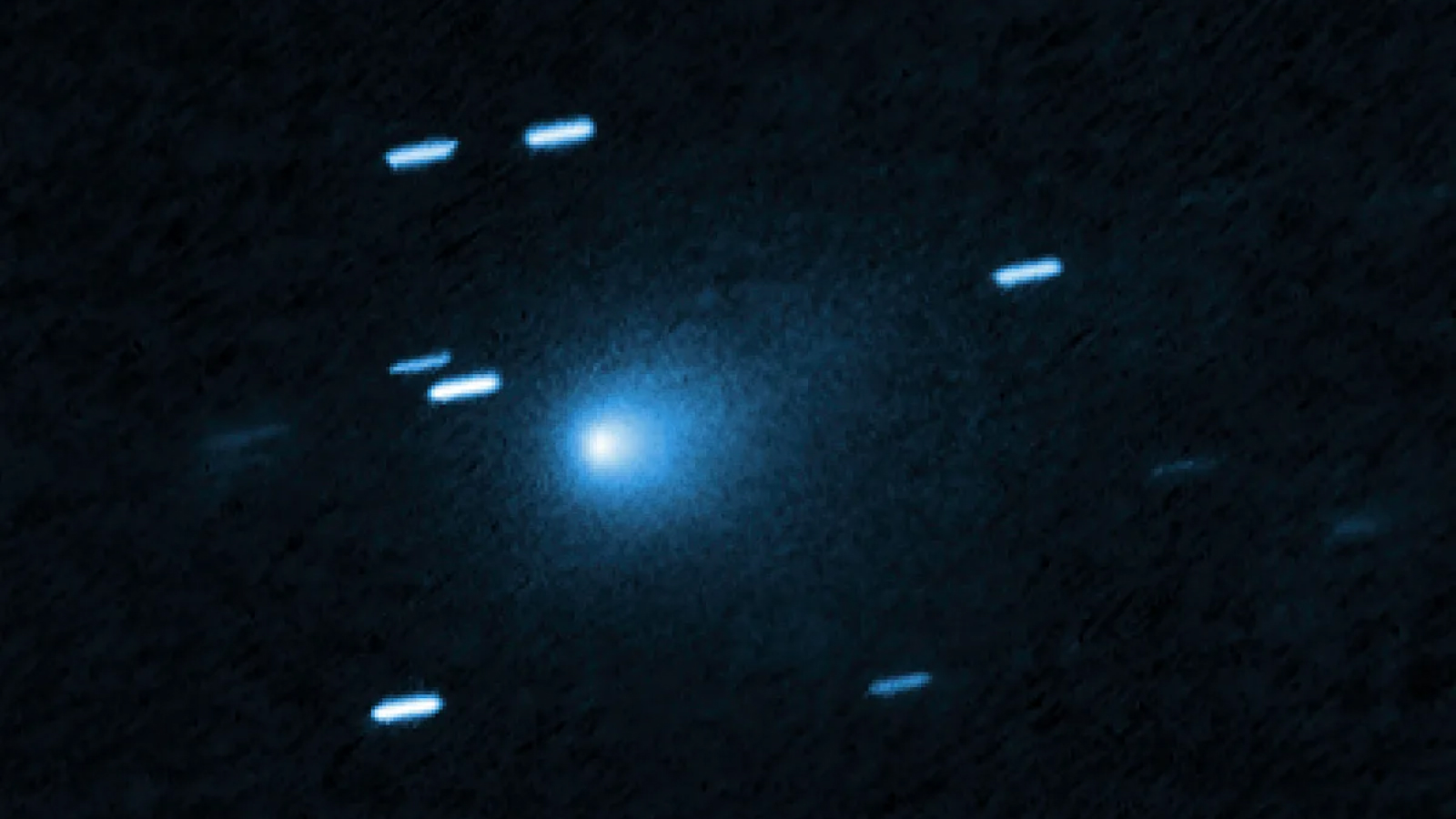Refresh
2025-11-17T16:00:18.310Z
Other images taken by HiRISE

A collage of five images taken by the HiRISE camera aboard NASA’s Mars Reconnaissance Orbiter. (Image credit: NASA/JPL-Caltech/University of Arizona)
HiRise has imaged vast areas of the Martian landscape in unprecedented detail, according to NASA. Check out the HiRise website, hosted by The University of Arizona, to scroll through hundreds of previous HiRise images.
2025-11-17T14:58:19.600Z
Live Science roundup

Ben Turner
Acting Trending News Editor
2025-11-17T14:51:58.159Z
What is HiRISE?

An artist’s illustration of Nasa’s Mars Reconnaissance Orbiter. (Image credit: Getty Images)
The as-of-yet unreleased comet 3I/ATLAS images were taken by the High Resolution Imaging Science Experiment (HiRISE) aboard NASA’s Mars Reconnaissance Orbiter. The orbiter has been flying around Mars since 2006, searching for signs of water on the Red Planet. The HiRISE camera managed to get images of comet 3I/ATLAS as it zoomed past Mars in early October.
The images are expected to be the highest-resolution images of comet 3I/ATLAS yet, and even clearer than the Hubble Space Telescope’s comet snaps taken in July, the New York Post has reported.
2025-11-17T14:30:05.740Z
When will NASA release images?
2025-11-17T14:13:28.528Z
Here’s a selection of some of our 3I/ATLAS stories so far

Patrick Pester
Trending News Writer
2025-11-17T13:55:00.117Z
Everything you need to know about 3I/ATLAS

A snapshot of comet 3I/ATLAS taken by the Hubble Space Telescope in August. The image was captured using a colored filter and does not represent the comet’s current appearance. (Image credit: NASA/ESA)
So what is 3I/ATLAS? And why do people care?
3I/ATLAS, which was first discovered in early July, is the third interstellar object ever found in our solar system. That means it doesn’t come from our cosmic neighbourhood, but from somewhere else in our Milky Way galaxy.
Where exactly in our galaxy the comet came from is unclear — scientists aren’t sure whether it came from the Milky Way’s ‘thin’ disk or its ‘thick’ disk — but depending on its origins it could be more than 7 billion years old, making it more than 3 billion years older than our sun. Tracing 3I/ATLAS’s origins is made even more challenging by its material, which has been transformed by billions of years of exposure to cosmic rays.
Telescope observations suggest the comet is roughly 7-mile-wide (11 kilometers) and zooming at more than 130,000 mph (210,000 km/h). Having passed perihelion, or the closest point to our sun, roughly two weeks ago, 3I/ATLAS is now zipping toward its closest point to Earth on Dec. 19.
The exotic comet has many peculiar properties, from its chemical composition to its large size. This, alongside radio signals coming from it that are typical of all comets, has fuelled a frenzy of speculation that the 3I/ATLAS is an alien probe.
That’s almost certainly not the case, but it doesn’t mean that astronomers aren’t excited to study it. Investigating the comet could yield fresh insights into the conditions around other stars, our early galaxy, and the vast frontier of interstellar space.
2025-11-17T13:51:07.632Z
NASA set to share best images of comet 3I/ATLAS yet
Good morning, science fans. We’re back with more updates on the comet 3I/ATLAS. Following the end of the U.S. government shutdown, we’re seeing reports that NASA is set to release some of the best-quality images yet of the comet.
The images were taken by the HiRISE camera aboard NASA’s Mars Reconnaissance Orbiter, and could have significantly better resolution than those by the Hubble Space Telescope on July 21, 2025.
We’re getting to work on what all of this could mean for the rapidly-brightened comet, which is roughly 7-miles (11 kilometers) wide, more than 7 billion years old, and traveling at 130,000 mph (210,000 km/h) as it sheds its highly-irradiated coma across our solar system.
That’s more like it! Marvelous new image of interstellar Comet 3I/ATLAS, taken by photographer Satoru Murata before dawn this morning, captures intricate structure in its tail(s). On the right you can also see galaxy NGC 4691. https://t.co/7rP3S4ysa5 pic.twitter.com/KrjhOSCgLcNovember 16, 2025

Ben Turner
Acting Trending News Editor
